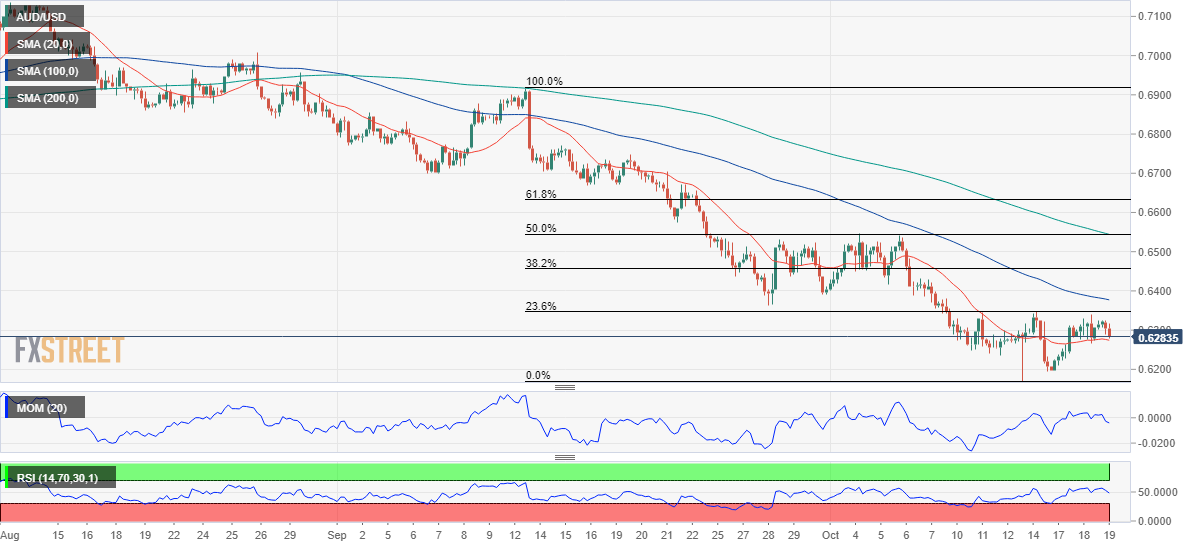- Australia is expected to have created 25,000 new job positions in September.
- The Reserve Bank of Australia is nowhere near the US Federal Reserve's stance on monetary policy.
- AUD/USD’s bearish trend is likely to be unaffected by Australia’s employment data.
Australia will publish its September employment report on Thursday, October 20. The country is expected to have added 25,000 new jobs, decreasing from the previous 33,500. The Unemployment Rate is expected to remain unchanged at 3.5%, as well as the Participation Rate, currently at 66.6%. Alongside the employment figures, the country will release Q3 NAB’s Business Confidence, foreseen to improve to 7 from 5 in the second quarter of the year.
Encouraging data may give AUD/USD a well-needed boost, as the pair trades near the two-year low posted this month at 0.6169, but would it be enough to take it out of its misery?
The RBA vs. the Fed
The Reserve Bank of Australia decided to hike the cash rate by 25 bps in October, easing quantitative tightening after pulling the trigger by 50 bps for four consecutive months, which took the main rate to 2.6%. The Minutes of the meeting released this week showed that policymakers believe that the effects of the recent hikes have yet to take effect on the economy, somehow justifying the smaller move, despite being convinced inflation is still “too high.”
But the real reason behind the latest RBA monetary policy decision is fear. Given that the “cash rate had been increased substantially in a short period of time,” the risk of a recession is greater. Governor Philip Lowe is going slower than its overseas counterparts, as he sees how other economies are rapidly deteriorating as rate hikes have little impact on inflation.
The US Federal Reserve has no such concern. The United States central bank is on its way to pushing rates into restrictive levels and keeping them there “for some time,” according to the latest FOMC Meeting Minutes. The Australian central bank is nowhere near a restrictive monetary policy
However, AUD/USD may continue to track the negative slope in the 50-Day SMA (0.6684) as the minutes from the RBA’s October meeting reveal that “a smaller increase than that agreed at preceding meetings was warranted given that the cash rate had been increased substantially in a short period of time,” and the comments suggest the central bank is nearing the end of the hiking-cycle as Governor Philip Lowe and Co. show little intentions of carrying out a restrictive policy.
AUD/USD possible scenarios
Central banks’ imbalance had a negative impact on AUD/USD, and given the current scenario, the pair’s bearish trend will likely prevail. For sure, upbeat figures should mean a temporary recovery, but the pair would need a stronger reason to run north.
A relevant resistance level comes at around 0.6345, the 23.6% Fibonacci retracement of the 0.6915/0.6169 slump. Sellers have rejected recovery attempts around it ever since bottoming at fresh 2022 lows in the previous week. The 38.2% retracement is at 0.6452 a level the pair can hardly reach just with the job’s report. In the middle, the 0.6390 price zone stands at a static resistance area.
The pair has a near-term support area at 0.6230/40, with a break below the latter favoring a downward extension towards 0.6160. If the year’s low gives up easily, AUD/USD has room to extend its decline toward the 0.6000 psychological threshold in the next few sessions.






